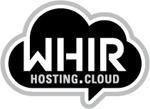How AWS, Google, Microsoft and SoftLayer will Change the Hosting Market
The hosting industry has its eyes on Amazon but now it is time to look at the Big Four.
August 11, 2014

logo-WHIR
This article originally appeared at The WHIR
By: Craig Deveson
The Big Four hyperscale vendors (AWS, Microsoft, Google and SoftLayer) are going to radically alter the public cloud hosting market in the next couple of years. The hosting industry has its eyes on Amazon but now it is time to look at the Big Four. They will own the majority of the market in years to come.
What do these vendors have in common?
- Lots of cash
- Other profitable businesses
- They are all price matching, often within days of each other (with the exception of SoftLayer)
- Large partner ecosystems
- Appeal directly to end users
- They are investing large sums of money on customer and partner training and education programs
In terms of training for example, there are now thousands of AWS certified professionals. I am sure the others will have similar programs in the next year.
This is radically different to what your local data center provider does currently.
All these vendors can cross-subsidise the growth of their cloud business with their other profitable businesses. Think of it like a freemium model where they get customers to start using it. Once they move their data over, they are unlikely to leave.
Why basic prices won’t increase (Compute, Storage and Networking)
The Big Four are using lower (basic) pricing to grow market share. Once customers are on the platform the objective is to get a greater percentage to upgrade and/or add-on higher profit margin services. These are high value services that they will continue to develop such as AWS Zacalo and RDS.
The internet giants invested $27B last year. Some vendors are investing 1B per quarter.

awsblog1
An area of major expansion is in Sales and Operations:
The AWS team grew by thousands of employees this past year, expanding AWS infrastructure, enterprise and public sector sales capabilities and allowing the team to innovate at an accelerating pace. * Amazon Second Quarter Guidance 2014
There are debates in how revenue is calculated for the Big 4 so it depends on how you calculate it. For example Microsoft Includes Office365, Google includes cloud products, and IBM throws in services. If you look at IASS & Pass then AWS is the clear leader. Microsoft Azure is a clear second and Google & Softlayer following. See chart:

awsblog2
Where is your opportunity in the public cloud?
Are your customers asking you about the public cloud? If not they are either trailing behind or asking someone else. More and more service providers are going to realize that it’s better to say “yes, we can help you with that.”
The public cloud is complex and Bob Darrow recently said that AWS’s Achilles heel is complexity. However this is the service providers’ opportunity to remove the customer’s pain. Enterprises are planning to move to the cloud, it’s just a matter of when and with who.
According to Gartner, torrential changes and a confidence crisis will reshape the service provider landscape.

awsblog3
Cloud Pricing is Confusing
AWS pricing options are on-demand, reserved and spot pricing, Azure has PAYG and term plans, Google has sustained use and HR billing models.
There are a number of revenue models, however they include three components:
Promoting value
Preventing customers pain
Productizing your portfolio
In summary, the hyperscale vendors will have the majority of the market share in the next few years and they will aim to build larger ecosystems to deliver more value added services on their platforms.
The cloud complexity issue could be overcome by a single platform or a managed service provider relationship. Cloud service brokers will manage multiple clouds and make it easier for customers.
*Note: I left OpenStack out of this article because my view is that OpenStack will mainly be used for private clouds and it’s struggling to get traction.
Craig presented at Hostingcon Australia Symposium on August 4th 2014. Check out his presentation on slideshare “Public Cloud: Add New Revenue & Profitability to Your Existing Hosting Business”
He can also be reached at Cloud Manager Twitter Email
This article originally appeared at: http://www.thewhir.com/blog/aws-google-microsoft-softlayer-will-change-hosting-market
About the Author
You May Also Like







